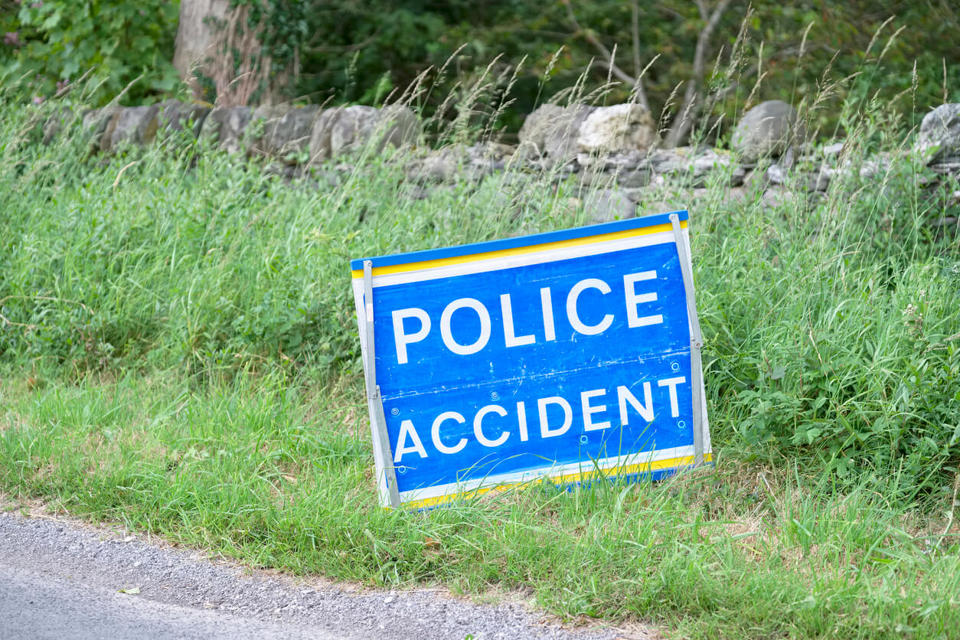The number of people killed on roads in Great Britain has increased, according to new Government statistics.
Figures from the Department for Transport (DfT) show that 1,792 people were killed in collisions last year; up 4% since 2015 and the highest annual total since 2011.
A total of 24,101 people were seriously injured - a rise of 9% (from 22,144 in 2015), which is being attributed by the Government at least in part due to changes in the way many police forces now report collision data.
The figures also reveal there has been no reduction in deaths of people on foot, bicycles and motorbikes since 2012.
Jason Wakeford, director of campaigns for the road safety charity Brake, said: "On average, five people continue to lose their lives each and every day - a deeply worrying figure which has not improved for some six years.
"Progress on road safety has stalled, pressing the need for a road collision investigation branch, similar to those already in existence for air, rail and sea, so that lessons can be learned to prevent future crashes.
“Only through in-depth investigation, at a national level, can solutions be found to stem the needless deaths on the roads every day.”
New drivers continue to be involved in a disproportionally large number of collisions. Brake is calling for the introduction of a graduated licensing system, including a minimum learning period and restrictions for newly-qualified drivers, to help new motorists build up their skills and experience more safely and over a longer period of time. This approach has dramatically reduced young road casualties in countries including Australia, New Zealand and across many states in the USA.
Wakeford said: "We are also calling for a review of speed limits on rural roads - where most deaths occur - and for Voluntary Intelligent Speed Adaptation, which helps drivers keep within the limit, to be fitted as standard to new cars as part of proposals being considered by the European Commission."
TRL’s academy director, Richard Cuerden, said the increase would further motivate its multi-disciplinary team of psychologists, engineers and scientists to improve their understanding of these events, so future tragedies can be prevented.
“The increase in road casualties reinforces the need for the establishment of a UK Road Collision Investigation Branch to gather and make available better data to provide the evidence base to reduce the number of fatalities and injuries on our roads,” he continued.
“Every single person killed on our roads represents a tragedy and it is imperative that road safety is given the same level of attention as that of air and rail.
“It is essential that future casualty prevention strategies are informed by latest trends such as the digital revolution and rapid development of vehicle technologies, change in mobility habits and the rise in active travel such as cycling.
“Only this way can we ensure that casualty prevention strategies are not only fit for purpose but future proofed too.”
Worryingly, the number of children killed is also up by 28% from 2015, with 69 under-15s dying in 2016. Of all child road casualties (15,976), 38% were pedestrians, and nearly a quarter (22%) were killed or injured during the afternoon school run, between the hours of 3-5pm.
RoSPA is calling for a renewed focus on teaching children life-saving road safety skills, including: effective road safety education in schools; practical pedestrian training for children; and providing safe walking and cycling routes to school.
It would also like to see greater promotion of the benefits of driving at 20mph in built-up areas, where there will be children walking or cycling to school.
Nick Lloyd, RoSPA’s road safety manager, said: “When there’s an increase in traffic with economic growth, generally casualty statistics do tend to go up, but this in no way justifies these shocking figures.
“Britain traditionally has one of the best road safety records in the world, but we must focus our efforts through effective education, engineering and enforcement if we are to make our roads safer for pedestrians and cyclists.
“These statistics demonstrate the need for motorists to be extra vigilant when travelling during school-run hours – young children can be impulsive, so there is a need to be constantly aware of what’s happening around the car. More than 90 per cent of road crashes involve human error, which demonstrates the need for drivers to concentrate at all times, watch their speed, and avoid distractions.
“We also urge parents to kit their children out in high-visibility gear for the school journey, especially as the nights are now drawing in.”
The statistics also show the need for the Government to look again introducing Single/Double Summer Time (SDST), with which we would have an extra hour of daylight in the evenings, for the afternoon school run, RoSPA says.
One piece of encouraging news in the DfT figures is that the number of motorcyclists killed is down by 13% from 365 to 319, despite an increase in the amount of motorcycle traffic, demonstrating that motorcycle safety messaging is having a positive effect.





















matthewr88 - 29/09/2017 10:36
I think the media needs to take a long hard look at itself. It is a travesty that the number of pedestrians, largely children, has increased by so much and the media focus' on one death caused by a cyclist. Motorists have their heads in the sand, and this is entirely the responsibility of the media. Until people realise they are driving around a lethal weapon and take the responsibility that entails nothing is going to change. Why else would increasing fines for speeding and mobile phone use have no effect. Until every advert break on TV and bill board sports pictures of dead and injured children nobody is going to change their driving habits.